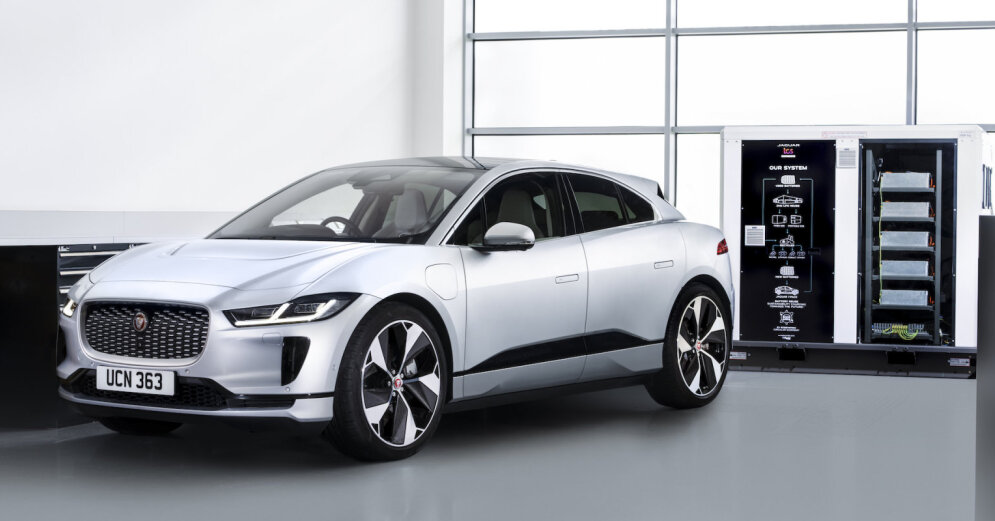“Jaguar Land Rover” has partnered with Pramac to create a zero-emission charging device from used Jaguar I-Pace batteries. The energy storage device charges from solar panels. Collaboration with industry leaders will help Jaguar Land Rover achieve zero carbon emissions by 2039 level.
–
–
Content will continue after the ad
Advertising
–
“Jaguar” will become electric in 2025, and we will expect the first 100% electric “Land Rover” in 2024 – this marks our company’s transition to the electric future. In turn, it is an integral part of the sustainability strategy, which envisages introducing a comprehensive electric car ecosystem from batteries to charging . It includes our plan to create technical and business innovations for the reuse of batteries. The cooperation with “Pramac” is proof of our work in this direction with the aim of showing how it is possible to achieve zero emissions by combining renewable energy resources and used batteries,” says Juste Jaruše, “Jaguar Land Rover” brand manager in the Baltics.
“Pramac” is a world leader in the energy industry, and the cooperation between “Jaguar Land Rover” and this company aims to develop a portable zero-emission energy storage device. Pramac has created a technology called Off Grid Energy Storage System (ESS) that uses lithium-ion cells from Jaguar I-Pace batteries taken from prototypes and engineering test units. As a result, this technology provides zero-emission electricity in places where there is limited or no access to the electricity grid.
“This design is a great example of how we are working with industry leaders to build a sustainable future and move closer to a true circular economy. We are delighted to be working with Pramac to use old Jaguar I-Pace batteries in a portable zero-emission energy device .The inclusion of the new machine in the equipment of the Jaguar TCS Racing team this season was a great opportunity to show what it is capable of,” explains Andrew Whitworth, Jaguar Land Rover’s circular economy team leader in the battery sector.
This partnership is the first of Jaguar Land Rover’s journey towards new circular economy business models. Precisely because the company has committed to achieve zero emissions in all its processes and chains by 2039, the company has also started implementing programs that will allow batteries to live a second life.
After use, the batteries can be used for other purposes as well, because in the case of Jaguar Land Rover they meet high standards. Therefore, when the performance of the batteries no longer fully meets these standards, they can be safely used in processes with lower requirements. The benefit from such a second or stationary life, i.e. renewable energy storage, could exceed 200 gigawatt hours per year by 2030. At the global level, the benefit from this will be measured in the amount of more than 30 billion dollars.
The power of the main system of the device is up to 125 kWh. That’s more than enough to fully charge a Jaguar I-Pace or power a family home for a week. Pramac reuses up to 85% of the battery, including modules and wiring. The remaining materials go back into the supply chain.
Since the “Off Grid Energy Storage System” charges itself with solar panels, it is autonomous. The device consists of a battery system connected to a bidirectional current converter and its control systems. For commercial rental, the devices are equipped with “Type 2” standard electric car charging cable and dynamic control, which allows up to 22 kW power to be used for charging the car.
The capabilities of the new device were put to the test as Jaguar TCS Racing prepared for the 2022 ABB FIAFormula E” for the world championship. During tests in Great Britain and Spain, it powered diagnostic equipment that analyzed the car’s performance on the track and supplied autonomous electricity to the Jaguar garage.
The Off Grid Battery ESS system will also be deployed at Jaguar Land Rover’s center in Johannesburg, South Africa, the largest of its kind in the world. This will help the complex cope with power outages in the power grid.
–


